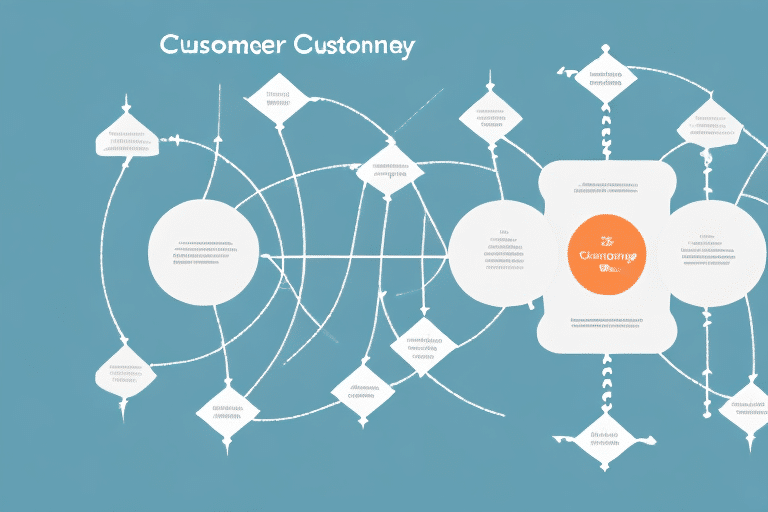The Importance of Customer Retention for Business Success
In today's highly competitive market, customer retention is more crucial than ever. Retaining existing customers is significantly more cost-effective than acquiring new ones. According to a study by Harvard Business Review, increasing customer retention rates by just 5% can boost profits by 25% to 95%. Loyal customers not only provide a steady revenue stream but also contribute to a strong brand reputation and enhance customer lifetime value.
Moreover, understanding and prioritizing customer retention helps businesses stay ahead of competitors who are also focusing on retaining their customer base. By fostering loyalty, businesses can create a sustainable advantage in the marketplace.
The Role of Customer Retention Research in a Competitive Market
With the proliferation of technology and the internet, the market has become more competitive, offering consumers a plethora of choices. Customer retention research is essential for businesses to understand and anticipate customer needs, thereby maintaining their customer base.
Research indicates that it is significantly cheaper to retain existing customers than to acquire new ones. For instance, acquiring a new customer can cost five times more than retaining an existing one, as reported by Invesp. By focusing on retention, businesses can allocate resources more efficiently and build a loyal customer base that drives long-term profitability.
Effective Methods for Conducting Customer Retention Research
Customer Surveys and Feedback Platforms
One of the most effective methods for conducting customer retention research is through customer surveys. Surveys provide valuable insights into customer satisfaction, preferences, and pain points. Designing well-structured surveys ensures the collection of actionable data.
Additionally, using real-time customer feedback platforms allows businesses to quickly address issues and adapt to customer needs. Tools like SurveyMonkey and Qualtrics facilitate the gathering and analysis of customer feedback efficiently.
Data Analysis and Customer Segmentation
Analyzing customer data, including behavior patterns, purchase history, and demographics, is crucial for understanding trends that influence retention. By segmenting customers based on these factors, businesses can tailor their retention strategies to different groups.
For example, identifying a segment with a high churn rate enables businesses to develop targeted campaigns aimed at addressing the specific reasons for departure. Utilizing data analytics tools such as Google Analytics or Tableau can enhance the effectiveness of these analyses.
Key Factors Influencing Customer Retention
Exceptional Customer Service
Providing outstanding customer service is a cornerstone of customer retention. This involves responding promptly to inquiries, offering personalized solutions, and exceeding customer expectations. Zendesk reports that 62% of consumers consider excellent customer service an important factor in their choice of loyalty to a brand.
Effective Communication
Maintaining regular and meaningful communication with customers keeps them engaged. Sending out newsletters, updates on new products or services, and personalized offers can reinforce the customer-business relationship.
Loyalty Programs and Incentives
Implementing loyalty programs and offering incentives such as exclusive discounts or rewards can significantly boost customer retention. These programs make customers feel valued and encourage repeat business.
Implementing Successful Customer Retention Strategies
Developing Loyalty Programs
Loyalty programs reward customers for their repeat business. For instance, Starbucks' rewards program offers points for every purchase, which can be redeemed for free items. Such programs incentivize customers to continue choosing the brand.
Personalized Marketing Campaigns
Using customer data to create personalized marketing campaigns ensures that the messages resonate with individual preferences and behaviors. Personalized experiences can significantly enhance customer satisfaction and loyalty.
Continuous Improvement Based on Feedback
Regularly updating and refining retention strategies based on customer feedback ensures that the strategies remain relevant and effective in meeting customer needs.
Leveraging Technology to Enhance Customer Retention
Customer Relationship Management (CRM) Systems
CRM systems like Salesforce or HubSpot are essential for managing customer interactions and data. They help businesses track customer behavior, preferences, and interactions across multiple channels.
Data Analytics Tools
Data analytics tools provide deeper insights into customer behavior and trends. Platforms like Tableau and Power BI enable businesses to visualize and interpret complex data sets effectively.
AI and Personalization
Artificial Intelligence (AI) technologies, including chatbots and personalized email marketing tools, allow businesses to offer tailored experiences to customers. AI-driven personalization can increase engagement and retention rates by making interactions more relevant and timely.
Measuring Customer Loyalty and Avoiding Pitfalls
Key Metrics for Measuring Loyalty
Metrics such as Net Promoter Score (NPS), Customer Lifetime Value (CLV), and Churn Rate are essential for assessing customer loyalty. NPS, for example, measures the likelihood of customers recommending a business to others, providing a clear indicator of overall satisfaction and loyalty.
Common Pitfalls in Customer Retention Research
Businesses must avoid common mistakes such as failing to set clear objectives, neglecting qualitative research, and not measuring the return on investment (ROI) of retention strategies. Ensuring a well-rounded research approach can help in accurately capturing customer needs and preferences.
Real-World Case Studies
Analyzing case studies of successful customer retention strategies provides valuable insights. For example, Apple's focus on customer-centric design and service has built a loyal customer base, while Amazon's personalized recommendations enhance customer satisfaction and retention.
Conclusion: Investing in Customer Retention Research for Long-Term Success
Investing in customer retention research is pivotal for a business's long-term success. Effective retention strategies not only increase revenue and reduce churn but also build strong, lasting relationships with customers. By understanding the importance of retention and leveraging research to inform strategies, businesses can gain a competitive edge and achieve sustainable growth in today's dynamic market.




















